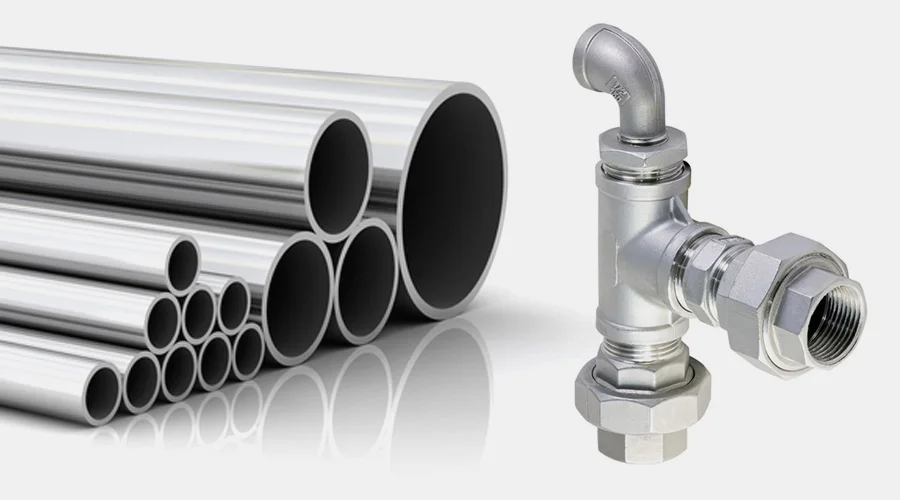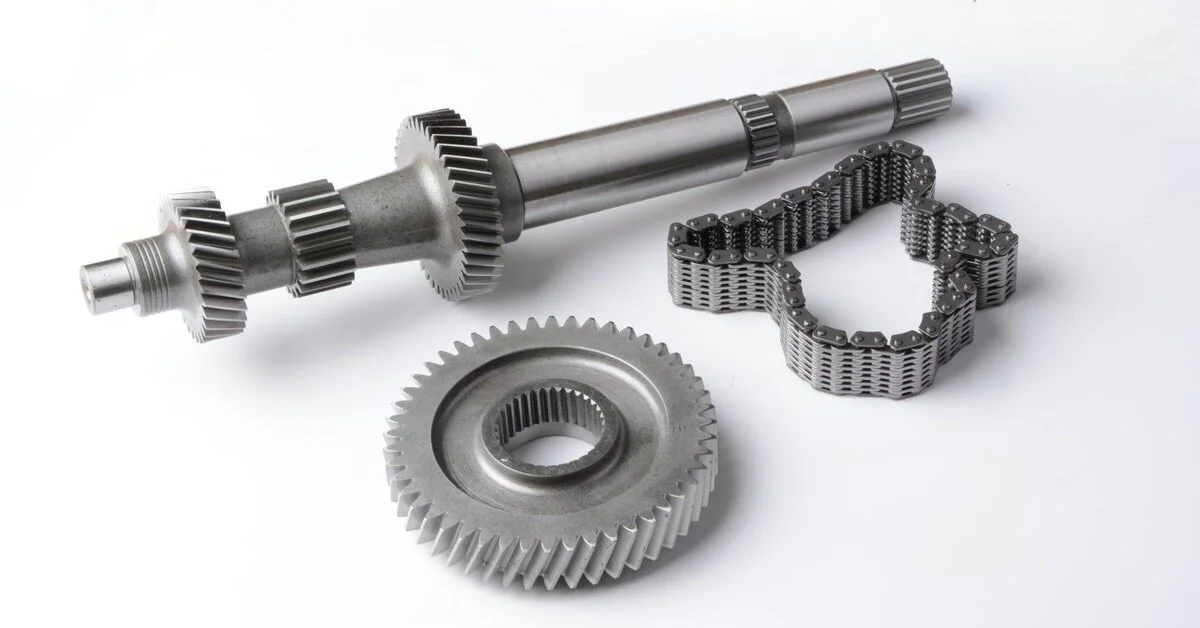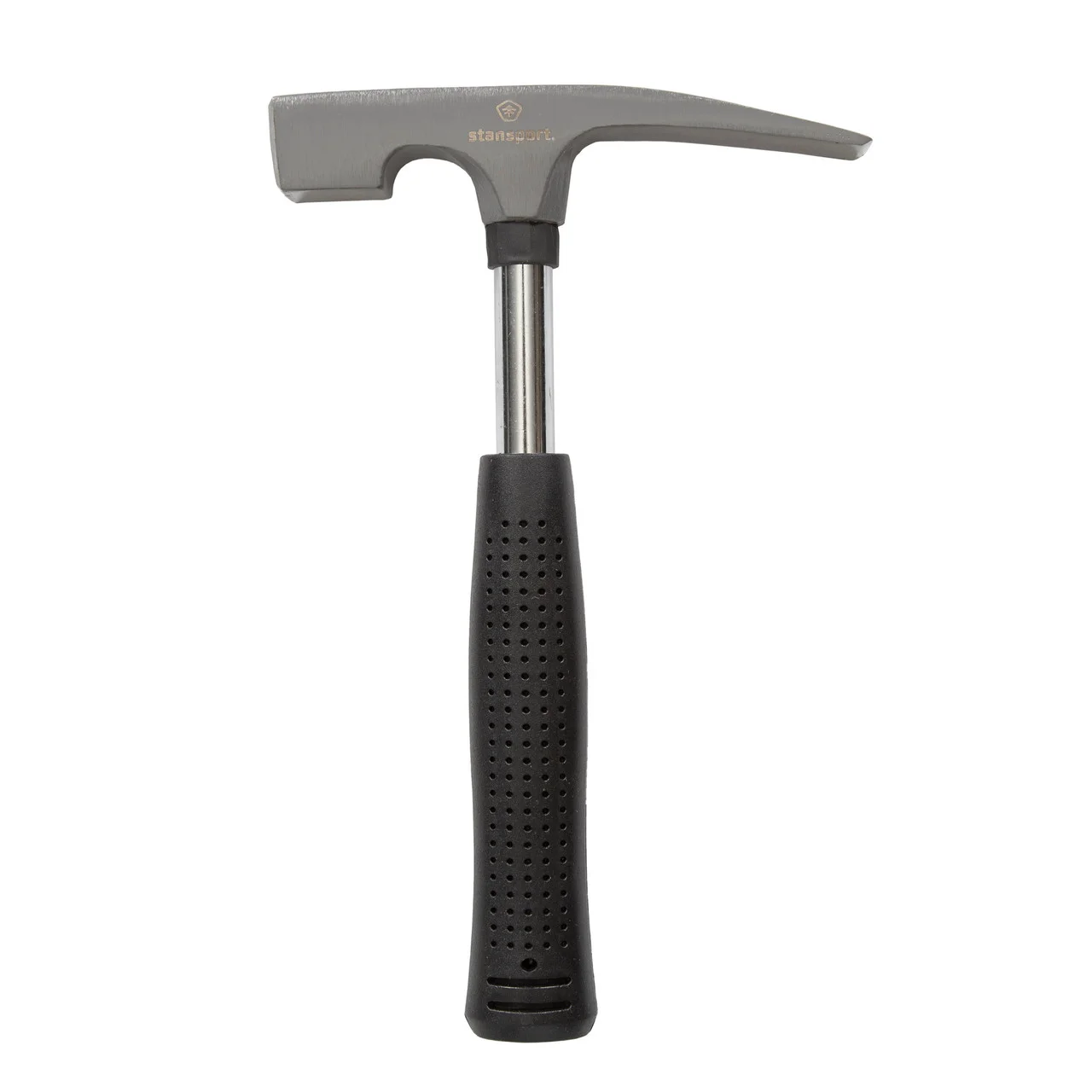
Description of the Alloy Steel and Carbon Steel
The journey of steel dates back thousands of years when humans first embarked on the quest to extract stronger and more durable metals from iron ore. Through the continuous evolution of metallurgy, steel emerged as a material far superior to pure iron in terms of strength, toughness, and versatility. This advancement also led to the development of diverse steel types, with carbon steel and alloy steel being two of the most prevalent ones. Although they may seem alike at first glance, they possess distinct characteristics that make them suitable for different applications. Let's delve deeper into each type.
Alloy Steel: A Blend of Elements for Enhanced Performance

Alloy steel is primarily composed of iron and carbon, but what sets it apart is the addition of various alloying elements, including chromium, nickel, molybdenum, manganese, and vanadium, in different proportions. These elements endow alloy steel with enhanced properties, such as increased strength, hardness, corrosion resistance, wear resistance, and toughness.
Alloy steel can be broadly categorized into two types based on the total weight percentage of alloying elements: low-alloy steel and high-alloy steel. Low-alloy steel, with alloying elements typically accounting for less than 5% of the total weight, is the most commonly used type. Elements like manganese and silicon are often added to this steel. Manganese improves the hardenability of the steel during heat treatment, reducing the risk of cracking. Silicon, on the other hand, acts as a deoxidizer, enhancing the quality and workability of the steel. These elements primarily boost the structural strength and weldability of the steel while maintaining good ductility and machinability. Thanks to its relatively low production cost, low-alloy steel is widely utilized in general engineering applications, such as construction, automotive manufacturing, and infrastructure development.
High-alloy steel, which contains more than 5% of alloying elements, incorporates higher proportions of elements like chromium, nickel, molybdenum, tungsten, and vanadium, along with rare elements such as titanium and niobium. Chromium is a crucial component in stainless steel and some tool steels. It significantly enhances the corrosion resistance of the steel and also has a positive impact on its hardness and wear resistance. Nickel improves the toughness of the steel, especially in low-temperature environments. Alloys with high nickel content, like Monel and Inconel, exhibit excellent corrosion resistance. When combined with chromium, as in the case of 304 stainless steel, the corrosion resistance is further amplified, making it highly suitable for use in oxidative environments, such as humid air or acidic solutions. Molybdenum primarily enhances the toughness and strength of the steel under high-stress and high-temperature conditions. It reduces creep, improves resistance to pitting and crevice corrosion, and increases the hardenability of the steel, enabling deeper hardening, which is crucial for large components. Vanadium helps control grain growth during heat treatment, resulting in finer grain structures. This not only enhances the strength of the material but also maintains its ductility. Additionally, vanadium significantly improves the high-temperature performance of steels, making it a popular choice for high-temperature applications, such as engine components and heat exchangers.
Carbon Steel: The Basics and Beyond

As the name implies, carbon steel is mainly composed of iron with varying concentrations of carbon. Unlike alloy steel, it contains only trace amounts of other elements, such as manganese, silicon, or sulfur. The properties of carbon steel are highly dependent on its carbon content, which can range from extremely low levels (less than 0.05%) to relatively high levels (up to 2.0%). Generally, as the carbon content increases, the hardness and strength of the steel increase, but it becomes more brittle, with reduced ductility and weldability.
Due to its simple composition, carbon steel is generally easier to produce and more cost-effective compared to alloy steel. It also responds well to heat treatment processes, offering great flexibility in terms of performance adjustment. Carbon steel can be processed using a wide range of manufacturing methods, including CNC machining, sheet cutting, sheet metal fabrication, and welding, services provided by companies like HL Parts. It is the most important group of engineering alloys and accounts for the majority of steel applications across various industries, from construction and manufacturing to transportation and energy.
Carbon steel is typically classified into four categories based on its carbon content:
Low-Carbon Steel (or Mild Steel)
With a carbon content of up to 0.3%, low-carbon steel is the most common form of carbon steel. It is soft, ductile, and easy to weld, making it ideal for applications such as rebar in construction, automotive and household appliance bodies, steel wires, fences, and various sheet metal components. Its good formability allows it to be shaped into different forms easily, while its ease of welding reduces production time and costs.
Medium-Carbon Steel
Medium-carbon steel has a carbon content ranging from 0.3% to 0.6%. Compared to low-carbon steel, it offers higher strength and hardness but has lower formability and ductility. This type of steel is often used in the manufacturing of machine gears, shafts, crankshafts, and drive shafts in the automotive industry. The increased strength and hardness make it suitable for components that need to withstand higher mechanical loads and stresses.
High-Carbon Steel
High-carbon steel, with a carbon content between 0.6% and 1.0%, is extremely hard and wear-resistant. However, its brittleness is also a significant drawback. It is highly responsive to heat treatment, which can greatly improve its performance. However, this requires precise processing and comes with higher risks. High-carbon steel is commonly used in the production of cutting tools, springs, and wear-resistant components. For example, in cutting tools, its high hardness enables it to cut through various materials effectively, while in springs, its ability to store and release energy is crucial.
Ultra-High Carbon Steel
Ultra-high carbon steel contains around 1.5% to 2% carbon and bridges the gap between high-carbon steels and cast iron. Due to its extremely high hardness and brittleness, it is extremely difficult to machine and form. As a result, it is rarely used except in specialized fields that demand exceptional performance, such as molds and certain types of cutting tools.
It's important to note that when the carbon content exceeds 2.0%, the material typically falls into the category of cast iron. Cast iron has a lower melting point and excellent fluidity, making it well-suited for casting complex shapes. The carbon content ranges for carbon steel are approximate guidelines, and classifications may vary depending on different sources. They mainly serve to provide a general understanding of the characteristics and behaviors of different carbon steel alloys.
Key Differences Between Alloy Steel and Carbon Steel
The differences in composition between alloy steel and carbon steel are the foundation for their distinct properties. Let's analyze these differences across several key characteristics:
Strength
Alloy steel generally exhibits higher strength than carbon steel, thanks to the addition of alloying elements like chromium, molybdenum, and nickel. However, the strength of alloy steel can vary widely depending on the type and concentration of these elements. In some cases, after proper heat treatment, the strength of certain low-alloy steels may be comparable to or even lower than that of high-carbon steel.
Hardness

In its untreated state, alloy steel usually has a higher hardness than plain carbon steel. Elements such as tungsten and vanadium contribute to this increased hardness by strengthening the matrix and forming hard carbides. However, through heat treatment, high-carbon steel can achieve hardness levels (e.g., above HRC 60) that are comparable to or even exceed those of some standard alloy steels. For instance, tool-grade high-carbon steel can match the hardness of tool steels containing tungsten or vanadium. Nevertheless, even after heat treatment, the wear resistance and hot hardness of carbon steel are generally inferior to those of alloy steel.
Toughness
Alloy steel generally outperforms carbon steel in terms of toughness, especially in extreme conditions such as high or low temperatures. Alloying elements like nickel, chromium, and molybdenum enhance its low-temperature impact resistance and high-temperature creep resistance, making it suitable for applications in aerospace, bridge construction, and pressure vessel manufacturing. Carbon steel performs well at room temperature, with low-carbon steel offering good ductility and impact absorption capabilities. However, its low-temperature brittleness and reduced high-temperature toughness limit its use in certain environments.
Ductility
The ductility of a material, which refers to its ability to deform without breaking, varies significantly between alloy steel and carbon steel depending on their composition and treatment. Low-carbon steel typically has better ductility than most alloy steels, making it a preferred choice for forming and welding applications. However, as the carbon content in carbon steel increases, its ductility decreases substantially. In extreme conditions, such as high or low temperatures or under high stress, alloy steel often demonstrates superior ductility compared to carbon steel. This is due to the presence of alloying elements like nickel and molybdenum. In contrast, carbon steel is more prone to fracturing in low-temperature conditions or deforming under high heat.
Wear and Tear Resistance
Alloy steel generally offers better wear resistance than carbon steel, especially in high-temperature, impact load, or corrosive environments. Low-alloy steels, such as manganese steel, combine high toughness and wear resistance, making them suitable for applications like mining equipment and heavy machinery. High-alloy steels, such as tool steel, can achieve significantly higher hardness and wear resistance after heat treatment, meeting the demands of cutting tools and molds. Carbon steel provides good wear resistance at room temperature, particularly high-carbon steel. However, it has lower impact resistance and is more likely to fail in high-temperature or humid conditions.
Corrosion Resistance
Alloy steel, containing elements like chromium, nickel, or molybdenum, forms a passive film—a protective oxide layer on its surface—that significantly enhances its corrosion resistance. It performs exceptionally well in humid, high-temperature, or acidic environments. Stainless steel, a common type of alloy steel, is widely used in chemical equipment and marine engineering due to its excellent corrosion resistance. In contrast, carbon steel has poor corrosion resistance and is prone to rust in humid or corrosive environments. To mitigate corrosion, it usually requires coatings, galvanization, or other surface treatments.
Thermal Conductivity
The thermal conductivity of alloy steel is generally lower than that of carbon steel. The addition of alloying elements such as nickel, chromium, and molybdenum hinders heat flow within the material. Carbon steel, on the other hand, relies mainly on its ferritic matrix for thermal conductivity, as it contains minimal or no alloying elements. Although the conductivity of carbon steel decreases slightly with an increase in carbon content, the change is relatively small. As a result, carbon steel is more suitable for applications that require efficient heat transfer, such as boiler pipes and radiators.
Machinability
Carbon steel, especially low-carbon and medium-carbon types, is more machinable due to its lower hardness and reduced cutting resistance. High-carbon steel, however, becomes much harder after heat treatment, presenting challenges in machining. The machinability of low-alloy steel is similar to that of medium-carbon steel. But high-alloy steels, such as stainless steel, have poorer machinability because of the presence of alloying elements like chromium and nickel. These steels often require high-performance cutting tools and optimized machining parameters to overcome issues like higher cutting resistance and increased tool wear.
Weldability
The weldability of carbon steel is generally better than that of alloy steel, especially for low-carbon steel, which is easy to weld with a low risk of cracking. As the carbon content increases in medium- and high-carbon steels, their weldability decreases due to higher hardening tendencies and increased sensitivity to cracking. Low-alloy steel has weldability similar to that of medium-carbon steel. High-alloy steels, such as high-strength steels and stainless steels, pose more welding challenges due to their alloying elements and usually require specialized welding techniques and strict control of heat input.
Cost
Carbon steel is more cost-effective because of its simpler composition and easier processing requirements. Therefore, for applications where enhanced performance in demanding environments is not necessary, carbon steel is a more economical choice compared to alloy steel.
Which One Is Better: Alloy Steel or Carbon Steel?
The question of whether alloy steel or carbon steel is better does not have a one-size-fits-all answer. It depends on various factors, and here are some considerations to keep in mind when making a choice:
Cost Considerations: If cost is a major concern, carbon steel is often the preferred option. It provides adequate performance for general structural uses where corrosion resistance is not a top priority. Additionally, for simpler fabrication processes, carbon steel is an excellent choice as it is easier to cut, weld, and shape, especially in its low-carbon varieties.
Situations Favoring Alloy Steel:
High-Performance Requirements: When a project demands superior tensile strength, hardness, and wear resistance, such as in the manufacturing of gears and suspension components in the automotive industry, cutting tools, and industrial molds, alloy steel offers the necessary durability.
Corrosive Environments: If the material will be exposed to moisture, chemicals, or marine environments, alloy steel with elements like chromium and nickel is better equipped to withstand these conditions.
Extreme Temperatures: In applications involving extreme temperatures, whether high-temperature environments in boilers, turbines, and pressure vessels or low-temperature environments in cryogenic tanks and refrigeration systems, alloy steel provides better thermal stability and toughness.
Specialized Properties: For projects that require materials with specialized properties, such as magnetic components, fatigue-resistant parts, or heat-resistant equipment, certain alloy steels are specifically engineered to meet these needs, ensuring long-term performance and reliability.
Working with a Reliable Partner for Steel Machining
Selecting the right steel material, be it alloy steel or carbon steel, is just the beginning of a successful project. At HL Parts, we offer a comprehensive range of metal machining services and treatment processes to meet your specific requirements. Our expertise, combined with the use of premium-quality materials and precision engineering, guarantees the excellence of every project. Whether you are seeking enhanced performance, cost-effective solutions, or expert guidance on material selection, we are here to assist you. Let's collaborate and create something remarkable together!
Frequently Asked Questions
Are there alternative materials to alloy and carbon steel?
Yes, there are several alternatives to alloy and carbon steel, each with its own unique advantages for specific applications:
Nickel Alloys: These alloys offer excellent corrosion resistance, along with good strength and malleability. They are highly favored in chemical processing, marine environments, and high-temperature applications.
Aluminum Alloys: Lightweight with outstanding corrosion resistance and a high strength-to-weight ratio, aluminum alloys are commonly used in the aerospace, automotive, and structural engineering industries.
Titanium: Known for its strength, lightweight nature, and durability, titanium is often used in aerospace applications and medical implants. However, it is relatively expensive and difficult to process.
Cast Iron: Durable and wear-resistant, cast iron is suitable for applications such as engine blocks, heavy machinery, and pipes. But its brittleness limits its use in some situations.
Copper and Copper Alloys: Renowned for their excellent electrical and thermal conductivity, corrosion resistance, and antimicrobial properties, copper and its alloys are widely used in wiring, plumbing, and decorative applications.
Composites: Materials like carbon fiber and glass fiber offer high strength and corrosion resistance. They are popular in aerospace, automotive, and sports equipment, although they come with higher costs.
Ceramics: Highly resistant to corrosion and wear, ceramics are suitable for use in electronics and medical devices. However, their brittleness restricts their application in high-impact scenarios.
Why are stainless steel, tool steel, and high-speed steel often separated from alloy steel?
Although these steels are technically types of alloy steel, they are often classified separately for the following reasons:
High Alloy Content: Stainless steel, tool steel, and high-speed steel contain significantly more alloying elements compared to regular alloy steel.
Specialized Properties: Each of these steels has unique characteristics. Stainless steel is known for its corrosion resistance, tool steel for its hardness, and high-speed steel for its performance at high temperatures.
Targeted Applications: These steels are specifically designed for certain industries, such as the medical, aerospace, or cutting tool industries, which makes them distinct from general-purpose alloy steels.
Industrial Practice: For the sake of clarity and ease of understanding in standards and markets, they are often classified independently.















